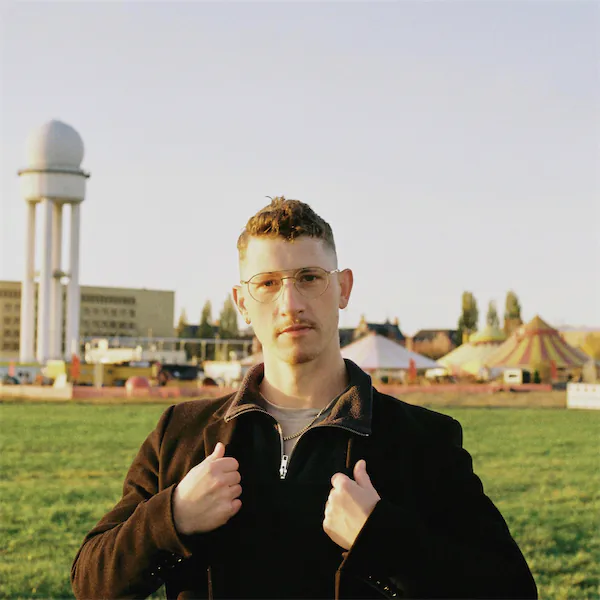Rixdorf was an independent town with a long history before it became a district of Greater Berlin in 1920. On a walk between historical and contemporary curiosities, we discover a village church from the Middle Ages, a Roman thermal bath for urban hygiene, a Gothic brewery now art centre and a well-designed new building for a cultural initiative. In addition to its rich history, Neukölln is also home to prime architectural examples of the ambitions of a constantly changing city.
Richardplatz is the centre of old Rixdorf and bears witness to its origins with the Bethlehemskirche. The church dates back to the 14th century and is therefore one of the oldest buildings in Berlin. Founded by Knights Templar, the town became an exile for Bohemian religious refugees at the behest of the Prussian king in the early 18th century. Exceptionally well-preserved streets and buildings allow us to travel back in time to Böhmisch-Rixdorf, a modest Prussian Baroque village around a medieval centre.
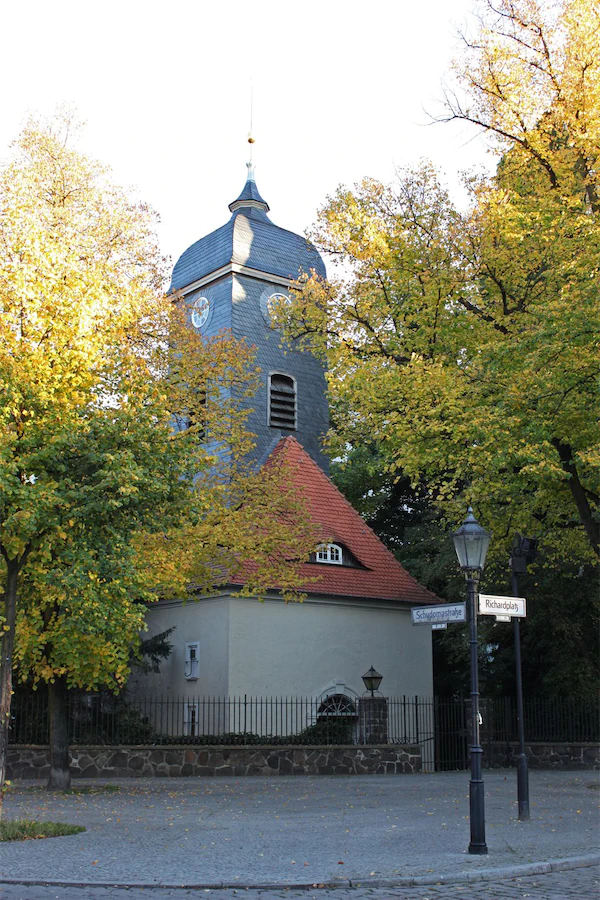
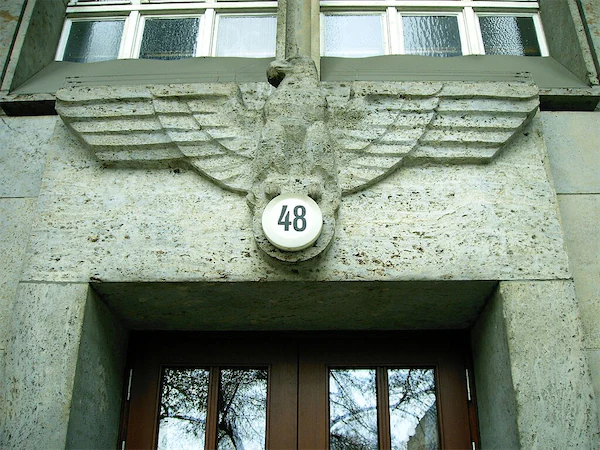
When the settlement in question developed into the most populous village in Prussia at the end of the 19th century, Neukölln was given an impressive urban face in just a few years under the direction of building director Reinhold Kiehl. After working as a teacher and inspector in Charlottenburg, Kiehl became Rixdorf's first town planner in 1905. Until his heart attack in the drawing room in 1912, he shaped today's Neukölln with a town hall, a bank, an opera house, several schools and a hospital, among other things.
In addition to how these public buildings were integrated into the existing surroundings, we are particularly interested in Kiehl's design for a municipal swimming pool (1914), whose façade, reduced to essential motifs, concealed pools and a library alike. Although the barrel vault of the large indoor swimming pool was built as an iron construction, inside we find the forms and ornamentation of an Ionic basilica. Alongside the ‘edification of the people’ through education and exercise, we recognise hygiene as one of the most pressing urban problems of the time. This enables us to better understand the interaction between purpose, construction and architectural style.
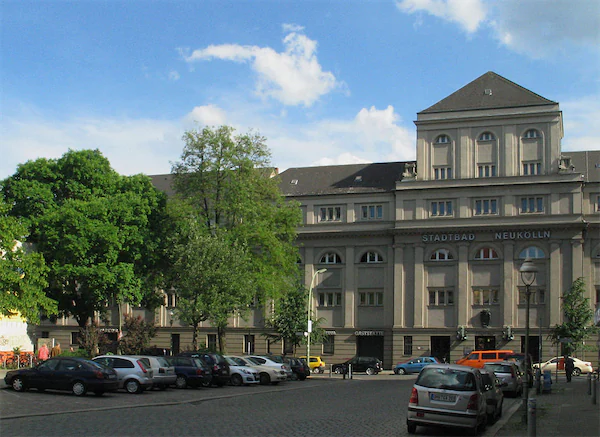
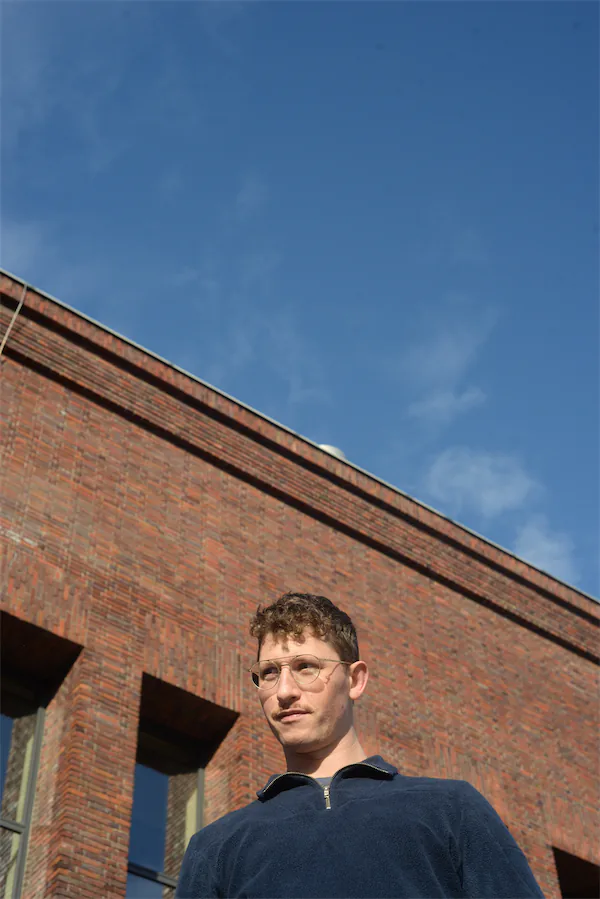
As we wander through the perimeter blocks in Neukölln, a blood-red tower rises up in front of us, adjoined by two enormous halls with vertical bands of windows. We’ve reached the KINDL - Centre for Contemporary Art, which was once built for the production of the eponymous beer: in 1930, the brewery, also known as the ‘Palace of Beer Culture’ and designed by architects Hans Claus and Richard Schepke, opened with the largest brewing vessels in Europe. In addition to the charming interior and the successful modernisation by the Zurich office grisard'architektur into an exhibition space, we are particularly interested in the use of the colourful clinker bricks for forms of so-called Brick Expressionism. What does this mean to us? We are trying to establish a relationship to the Gothic style, New Objectivity and other building movements, as well as the industrial aesthetic in the course of time.
Since 2020, the Spore Haus, a cultural and environmental initiative of the same name, has been located on the busy and structurally disparate Hermannstraße in the former flight path of Tempelhof Airport. From the outside alone, the building materials – red-pigmented exposed concrete, reused bricks, large glass panes, fine steel frames – as well as the structural integration of a cemetery wall and light poles, for example, mark it as one of the best new buildings in town. Inside, we are fascinated by the net-like stretched beams and a differentiated spatial structure that draws its appealing effect from the interplay of light and shadow on the finely moulded concrete. Balustrades and handrails made of uncoated steel complete the shell aesthetic, which refers us to a characteristic modus operandi of Berlin architecture.
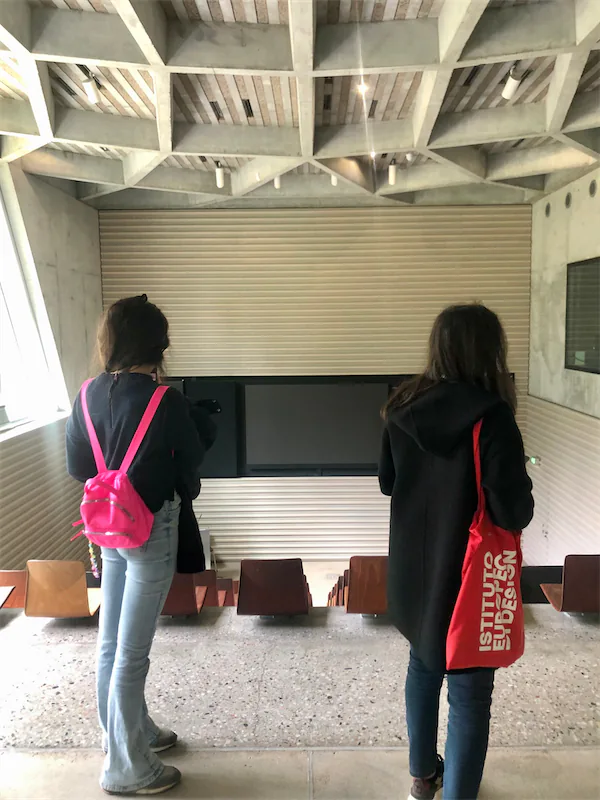
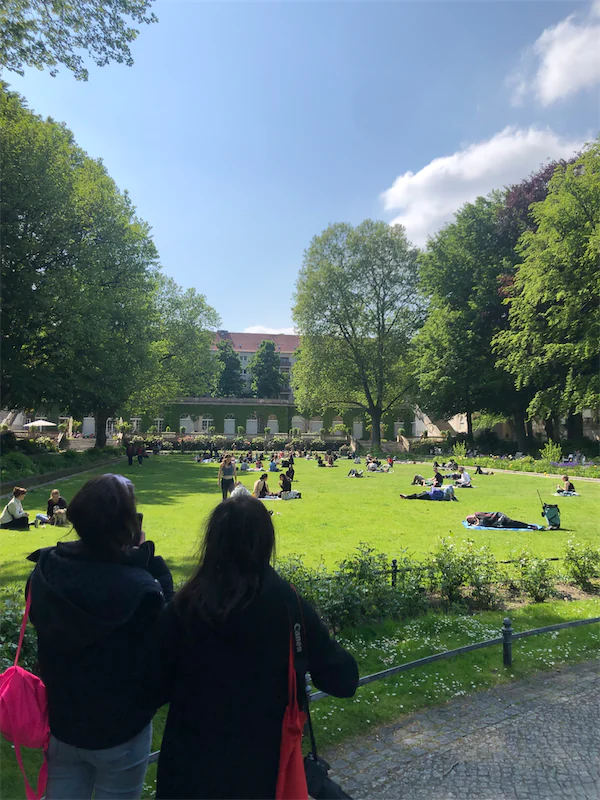
We end our tour in the picturesque Körnerpark, which was created in a gravel pit in 1916. With a garden design that favours visual relationships and symmetry and a terraced orangery – also designed by style pluralist Reinhold Kiehl – we find a baroque gem in the ravines of Neukölln. Beauty sometimes comes unexpectedly.
